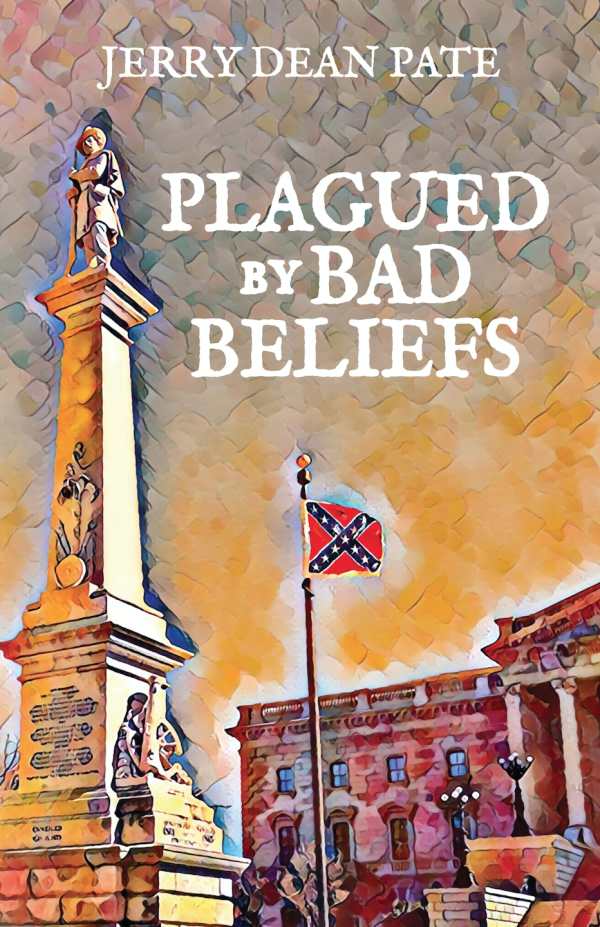Plagued by Bad Beliefs
Plagued by Bad Beliefs is an entertaining, perspective-driven historical novel centered on the fallout of a small town’s rivalries.
In Jerry Dean Pate’s historical novel Plagued by Bad Beliefs, a crusading journalist searches for the truth about her aunt, from the Antebellum South through to the Great Depression.
In 1936, Betsy is an unconventional writer who is stuck reporting on light “women’s news.” She’s pushed out of a United Daughters of the Confederacy meeting because its members refute any dissent about the war—even dissent that stems from a soldier’s letter. Indignant, Betsy seeks out her alcoholic colleague, Vernon, who shows her how the town of Haigler’s Crossing has always bent history to suit itself.
Digging through archival newspapers, a book about the Civil War and Reconstruction, and conversations, Betsy discovers what really sparked South Carolina’s secession. She also uncovers information about the rise of a textile mill owner and rich coverage of the mill’s problems, from its construction through to its fears of unionization. Betsy’s Aunt Mildred, it turns out, was involved in a strike at that mill.
Betsy is constructed as an entertaining send-up of an intrepid reporter, with quirky flourishes: she’s bristling, insecure, and adopts the demeanor of a Southern magnolia blossom whenever it suits her. And Vernon is a knowledgeable, disenchanted fixture whose stories move through the town’s lore in humorous, perceptive ways. His recollections also meander through other people’s childhood experiences, though, raising questions about how he would be privy to such information. Still, his raconteur tendencies leave plentiful room for embellishment.
But the narrative’s transitions between the newspaper office and its tales from the more colorful distant past are too swift. While the use of oral storytelling to share information leads to sprinklings of context about slavery and politics, it also renders Betsy’s naïve questions little more than routine prompts that serve to propel Vernon’s sharing forward. Betsy herself fades into the role of a bystander; in later sections, she drops out of the text.
The narrative revels in detailing people’s passionate but illogical behavior, as when it covers a melee between Republicans and Democrats.Tall-tale elements result in the flavor of a satire. Secondary characters are developed in broad strokes, and are used to illustrate local prejudices. Haigler’s Crossing comes to seem like an intriguing emblem of Southern pride, but one where pride has been taken too far: here, people’s emphasis on their family lineage becomes a hindrance, and suspicions about outsiders fuel conflicts.
In the end, the novel is driven by its messaging: it’s most concerned with exploring what happens when people cling to misguided beliefs regarding race and the working class. Its treatments of such subjects are provocative, and the revelatory conclusion of Betsy’s aunt’s story functions as an astute culmination of these themes.
Plagued by Bad Beliefs is an unusual historical novel centered on the fallout of a small town’s rivalries.
Reviewed by
Karen Rigby
Disclosure: This article is not an endorsement, but a review. The publisher of this book provided free copies of the book and paid a small fee to have their book reviewed by a professional reviewer. Foreword Reviews and Clarion Reviews make no guarantee that the publisher will receive a positive review. Foreword Magazine, Inc. is disclosing this in accordance with the Federal Trade Commission’s 16 CFR, Part 255.

